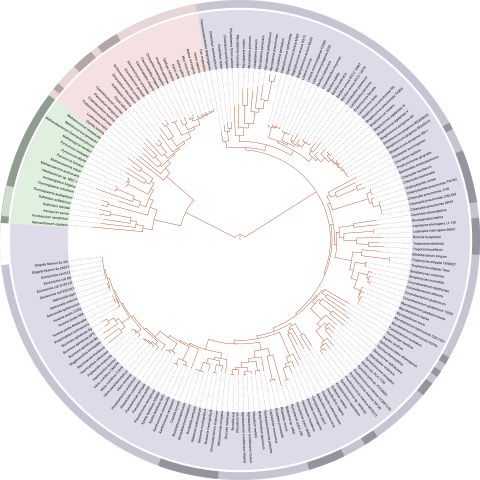Patterns: Writing an Encoding-Checker from Scratch
In Tram.1, only the first five characters in a function name are significant (plus the fact whether they are longer or not; four in variables). But TRAM.1 doesn’t check this: if two distinct function names are used, the first five characters of which are equal, then they are encoded to the same value.
To avoid bugs, a checker is needed, which checks if this occurs in an input TRS. Program EncChecker checks all variables and functions and warns if unequal identifiers will be encoded the same.
EncChecker uses the scanner/parser we have described in Section Converting from C to Tram (Scanner/Parser) and auxiliary modules Strings, Lists. All code can be found in the TRAM.1 Github repository.
Our purpose in describing EncChecker is not only to document that tool but mostly to discuss a few term rewriting programming patterns.
Given a TRS, function encchk should indicate which functions or variables are used which differ and yet are encoded the same. We do not focus on generating nice user-oriented output. Instead, encchk will output a list of all identifiers used in a program and will place unequal identifiers that lead to the same value (encoding) next to each other, preceded by $$ (which is not a legal identifier and therefore easily recognized).
That is, given a text file, the term encchk(scan(%1)) would produce such a list.
Pattern: Initializing Local Variables
Tram has no local variables, and yet, some functions need auxiliary data structures, which must be initialized. Inside module EncChecker, a list of all identifiers must be maintained, which is initialized to the empty list.
| |
The meta-term representation produced by scan generates four types:
trm(F,As)for symbolFand argument listAsarg(A,As)for argument (term)Aand argument listAseoathe empty argument listvar(N)variable with nameN
Pattern: Function Name or Extra Parameter
The checker could maintain two lists: one for functions and one for variables, but for simplicity, a single list is used. However, encoding rules for functions and variables differ, so processing F in Case 1 above and N in Case 4 must be distinguished.
The function name pattern might distinguish these cases as follows:
ck(trm(F,As),L) = ck(As,mpqf(F,L));
...
ck(var(N),L) = mpqv(N,L);
But the rules for mpqf and mpqv are likely to be very similar.
The extra parameter pattern encodes the distinction in a data value. In this case the character class of the first character in the identifier is used: low for functions, and cap for variables:
ck(trm(F,As),L) = ck(As,mpq(low,F,L));
...
ck(var(N),L) = mpq(cap,N,L);
The extra parameter pattern is used if further processing is similar, possibly diverging further along the way. We have seen this pattern being used in the function sccc in the scanner. The function name pattern is more common and is also used in function sccc.
The purpose of function ck is to visit all identifiers in a TRS and process them into the growing list of identifiers:
| |
Function mpq (mnemonic: map-query) maps the subject identifier to the entire list of stored identifiers, querying each if it leads to the same encoding. It creates a new list if there are no further identifiers to compare or passes the subject’s character class and the character class of the first stored identifier to the auxiliary function mpqc.
| |
Pattern: Have Your Cake
Ordinarily, sub-terms of arguments are accessed by matching the argument against a pattern. Function mpq could have been defined by
| |
Where the earlier definition passes Id2, the latter definition passes str(C, S), which is indeed the same argument. But in an implementation, a new term will then be built, which happens to be an equal term. This might be a small concern, but the earlier definition (to me) seems clearer.
The pattern leaves an argument as-is and uses an accessor (first, in this case) to access a sub-term. The pattern might be called ‘have your cake and eat it’. Note that there is an implementational disadvantage here as well: an additional reduction to reduce first. In most cases, clarity should prevail.
The next function, mpqc, should distinguish two situations: the subject and the first identifier in the list have the same type or not. If they are the same type, four and five are used to identify the number of characters that should coincide. We could also use values #4 and #5, but since no built-in operators exist for data values, they offer little added value.
mpqc(low,low,Id1,Id2,L)
= eqnc(five,eq(first(Id1),first(Id2)),rest(Id1),rest(Id2),
low,Id1,Id2,L);
mpqc(cap,cap,Id1,Id2,L)
= eqnc(four,eq(first(Id1),first(Id2)),rest(Id1),rest(Id2),
cap,Id1,Id2,L);
mpqc(Cc1,Cc2,Id1,Id2,L) = lst(Id2,mpq(Cc1,Id1,L));
Note that the ‘have-your-cake-pattern’ is used again. Without it the specification would have been almost as clear:
mpqc(low,low,str(C1,S1),str(C2,S2),L)
= eqnc(five,eq(C2,C2),S1,S2,low,str(C1,S1),str(C2,S2),L);
mpqc(cap,cap,str(C1,S1),str(C2,S2),L)
= eqnc(four,eq(C2,C2),S1,S2,cap,str(C1,S1),str(C2,S2),L);
mpqc(Cc1,Cc2,Id1,Id2,L) = lst(Id2,mpq(Cc1,Id1,L));
Finally, the heart of the checker (the function eqnc, for equal encoding) should distinguish these situations:
- the identifiers have been entirely compared and are equal. The first identifier can be ignored
- the characters relevant for the encoding are equal. Now the remaining characters must be compared
- all characters are equal so far, but more characters must be compared within the encoding
- an inequality is found beyond the length of the encoding: two different identifiers will be encoded the same
- an inequality is found within the encoding length. These are simply distinct identifiers
1 eqnc(N,ok,eos,eos,Cc,Id1,Id2,L) = lst(Id2,L);
2 eqnc(zero,ok,str(C1,S2),str(C2,S2),Cc,Id1,Id2,L)
= eqnc(zero,eq(C1,C2),S1,S2,Cc,Id1,Id2,L);
3 eqnc(N,ok,str(C1,S2),str(C2,S2),Cc,Id1,Id2,L)
= eqnc(prev(N),eq(C1,C2),S1,S2,Cc,Id1,Id2,L);
4 eqnc(zero,P,Q,R,Cc,Id1,Id2,L)
= lst(str('$',str('$',eos)),lst(Id1,lst(Id2,L)));
5 eqnc(N,P,Q,R,Cc,Id1,Id2,L) = lst(Id2,mpq(Cc,Id1,L));
Finally, auxiliary function prev is defined:
| |
In the repository at TRAM.1 Github repository a single rule is added to file EncChecker to test it on itself:
| |
Both functions and variables should flag an error. The output of encchk(scan(%1)) on EncChecker itself:
| |
